Interleukin-33 promotes intrauterine adhesion formation in mice through the mitogen-activated protein kinase signaling pathway
- PMID: 39164588
- PMCID: PMC11336135
- DOI: 10.1038/s42003-024-06709-1
Interleukin-33 promotes intrauterine adhesion formation in mice through the mitogen-activated protein kinase signaling pathway
Abstract
IL-33 belongs to the inflammatory factor family and is closely associated with the inflammatory response. However, its role in the development of intrauterine adhesions (IUAs) remains unclear. In this study, the role of IL-33 in the formation of IUAs after endometrial injury was identified via RNA sequencing after mouse endometrial organoids were transplanted into an IUA mouse model. Major pathological changes in the mouse uterus, consistent with the expression of fibrotic markers, such as TGF-β, were observed in response to treatment with IL-33. This finding may be attributed to activation of the phosphorylation of downstream MAPK signaling pathway components, which are activated by the release of IL-33 in macrophages. Our study provides a novel mechanism for elucidating IUA formation, suggesting a new therapeutic strategy for the prevention and clinical treatment of IUAs.
© 2024. The Author(s).
Conflict of interest statement
The authors declare no competing interests.
Figures
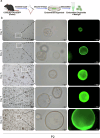

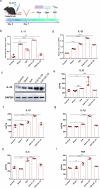
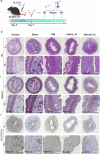
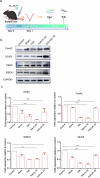

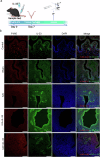
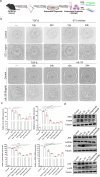
Similar articles
-
The KSR1/MEK/ERK signaling pathway promotes the progression of intrauterine adhesions.Cell Signal. 2025 Jul;131:111730. doi: 10.1016/j.cellsig.2025.111730. Epub 2025 Mar 13. Cell Signal. 2025. PMID: 40089092
-
The Overexpression of TGF-β and CCN2 in Intrauterine Adhesions Involves the NF-κB Signaling Pathway.PLoS One. 2015 Dec 31;10(12):e0146159. doi: 10.1371/journal.pone.0146159. eCollection 2015. PLoS One. 2015. PMID: 26719893 Free PMC article.
-
SCGB1D4 downregulation links to fibrosis in intrauterine adhesion patients and rat models†.Biol Reprod. 2025 Feb 14;112(2):273-285. doi: 10.1093/biolre/ioae172. Biol Reprod. 2025. PMID: 39588952
-
Recent Advances in Understandings Towards Pathogenesis and Treatment for Intrauterine Adhesion and Disruptive Insights from Single-Cell Analysis.Reprod Sci. 2021 Jul;28(7):1812-1826. doi: 10.1007/s43032-020-00343-y. Epub 2020 Oct 30. Reprod Sci. 2021. PMID: 33125685 Free PMC article. Review.
-
Local renin-angiotensin system molecular mechanisms in intrauterine adhesions formation following gynecological operations, new strategy for novel treatment.J Obstet Gynaecol. 2022 Aug;42(6):1613-1618. doi: 10.1080/01443615.2022.2036972. Epub 2022 Mar 9. J Obstet Gynaecol. 2022. PMID: 35260037 Review.
Cited by
-
Exploring the Antifibrotic Mechanisms of Ghrelin: Modulating TGF-β Signalling in Organ Fibrosis.Expert Rev Mol Med. 2024 Nov 21;27:e8. doi: 10.1017/erm.2024.38. Expert Rev Mol Med. 2024. PMID: 39569809 Free PMC article. Review.
-
Transcriptomics and proteomics reveal associations between myometrium and intrauterine adhesions.BMC Womens Health. 2025 Apr 11;25(1):170. doi: 10.1186/s12905-025-03661-y. BMC Womens Health. 2025. PMID: 40217245 Free PMC article.
References
-
- Hooker, A. B. et al. Systematic review and meta-analysis of intrauterine adhesions after miscarriage: prevalence, risk factors and long-term reproductive outcome. Hum. Reprod.20, 262–278 (2014). - PubMed
Publication types
MeSH terms
Substances
Grants and funding
LinkOut - more resources
Full Text Sources

